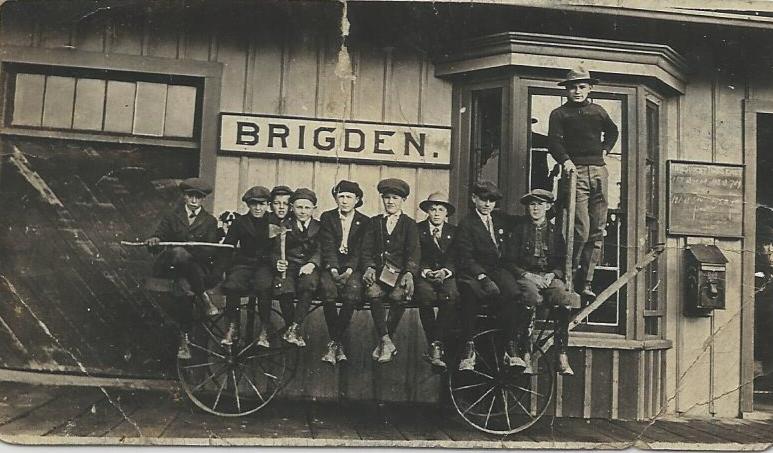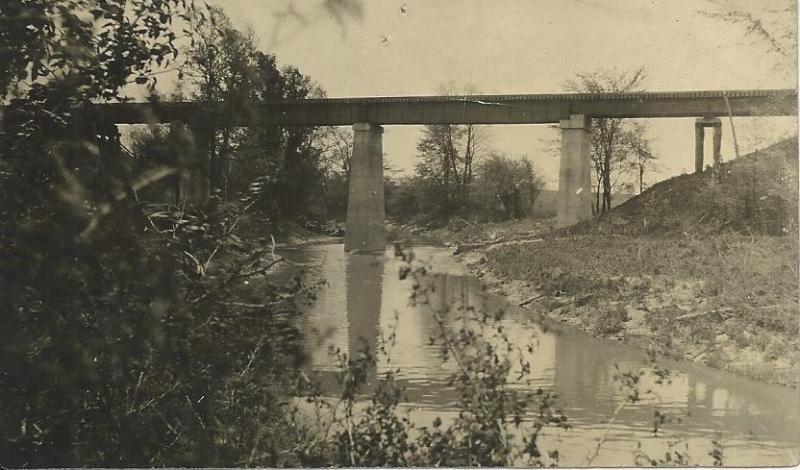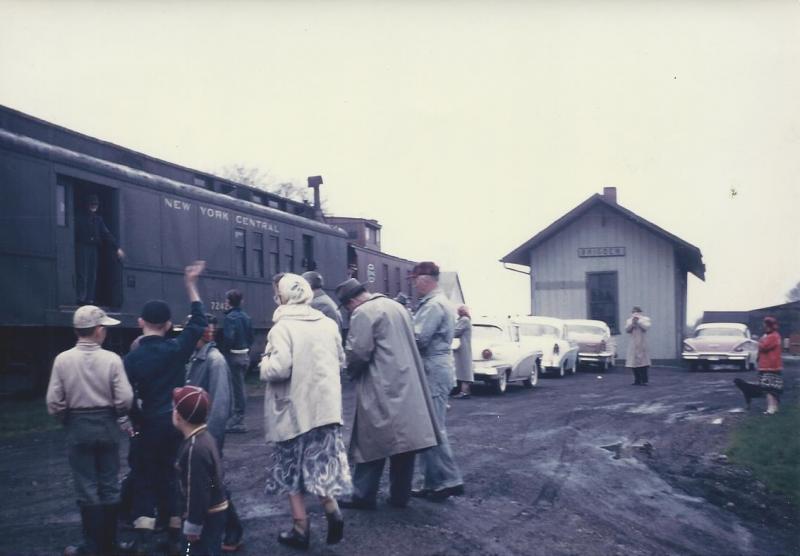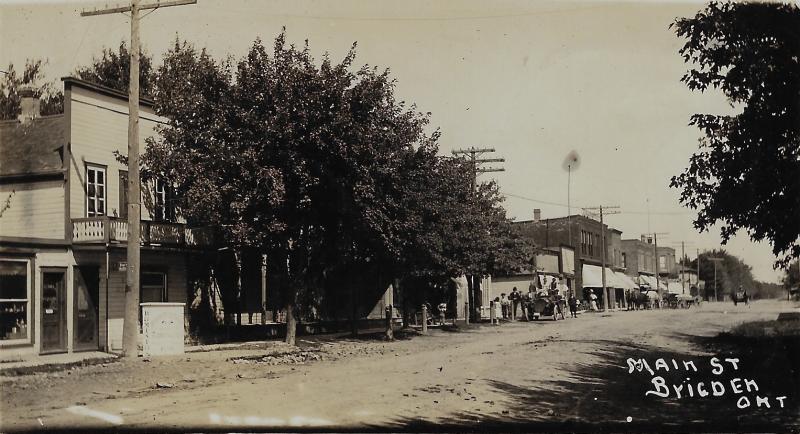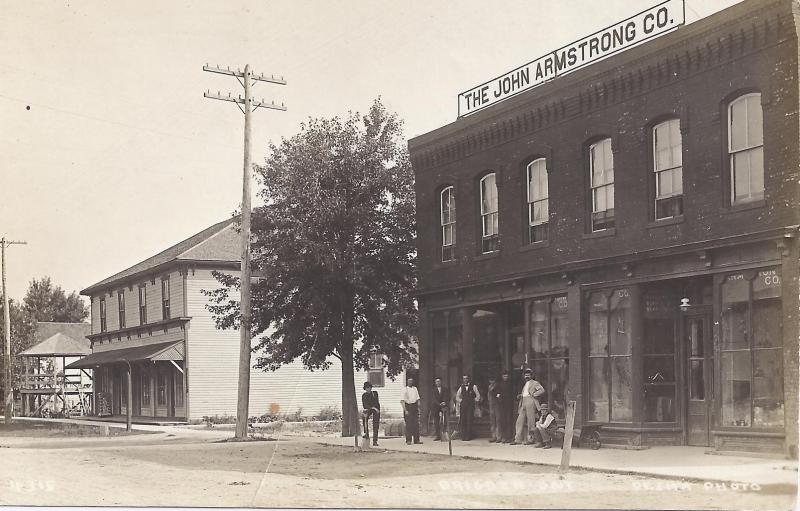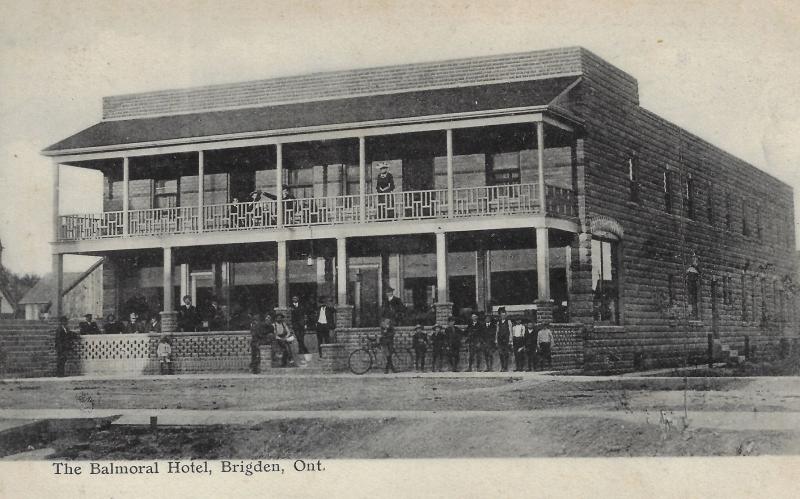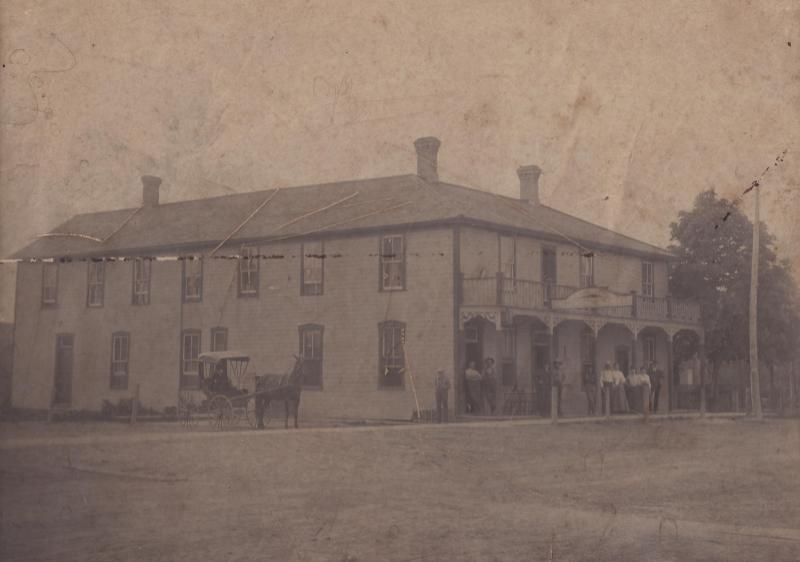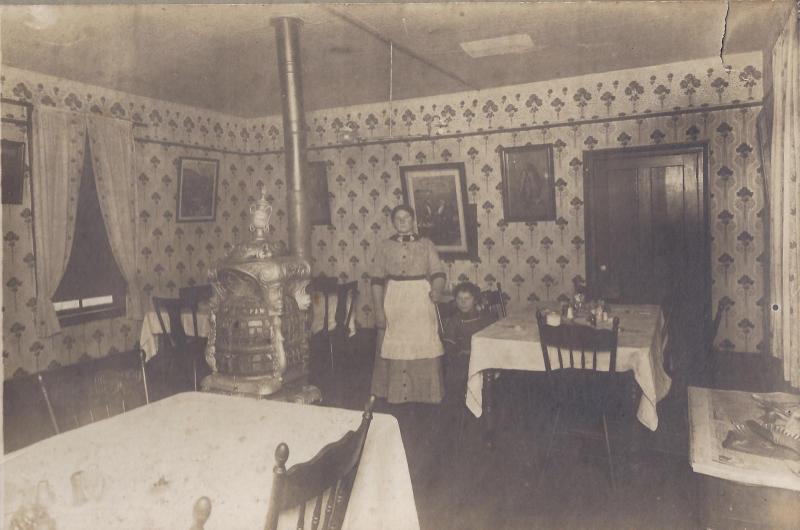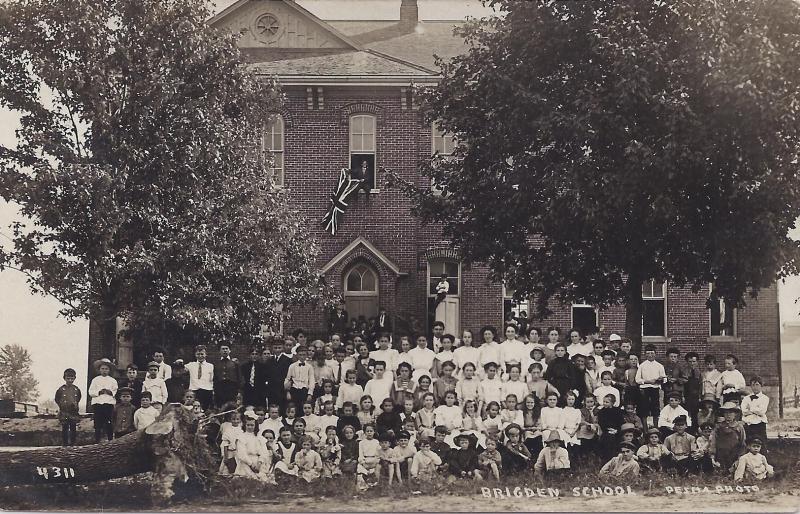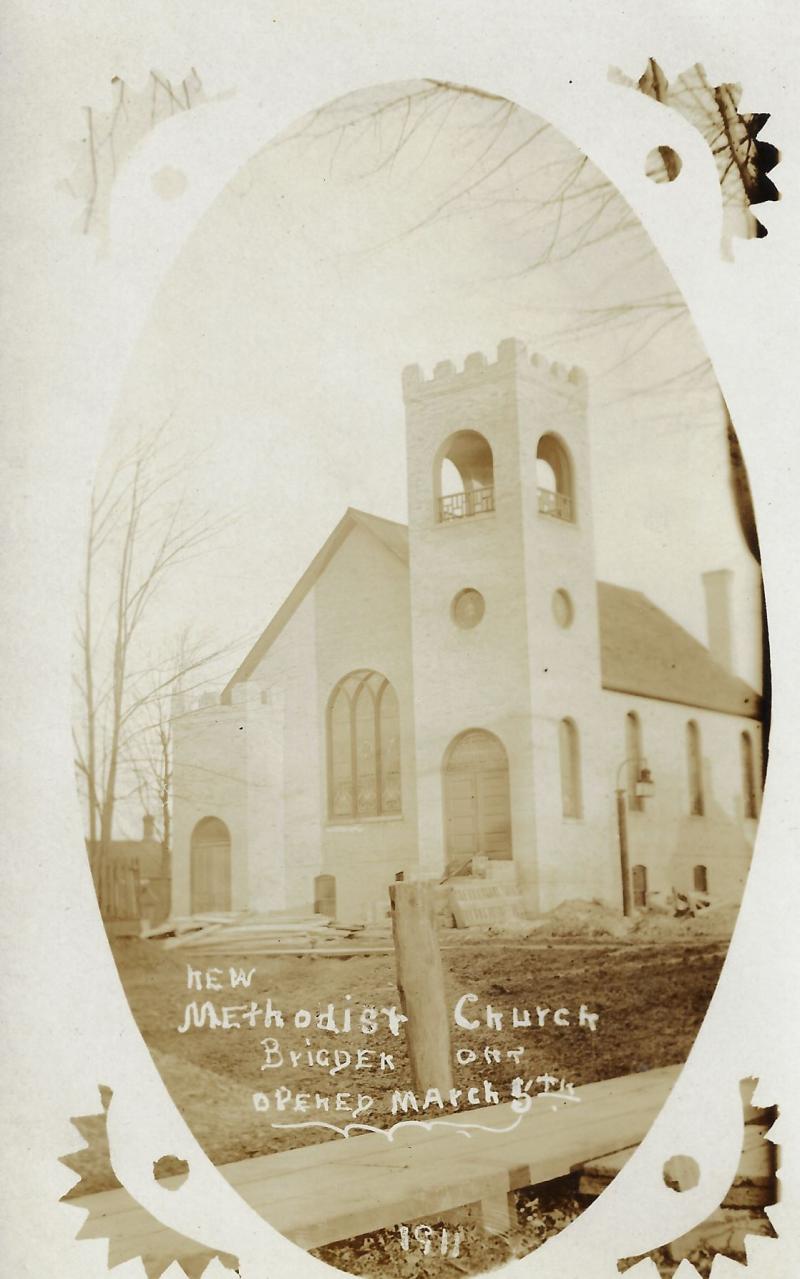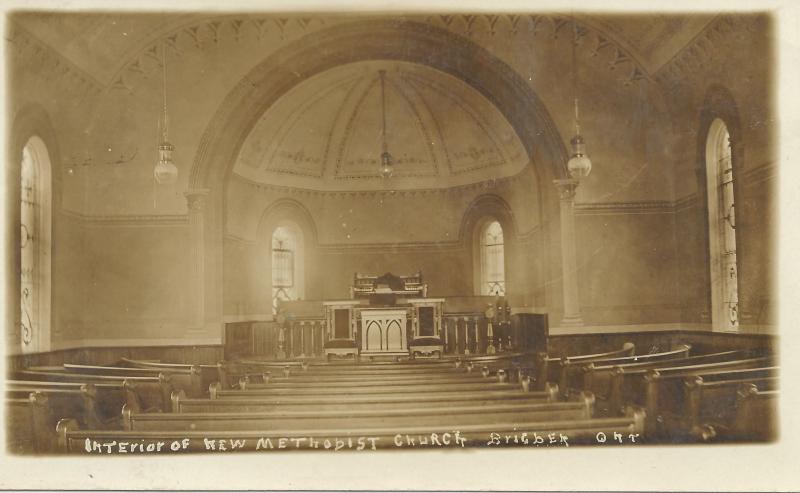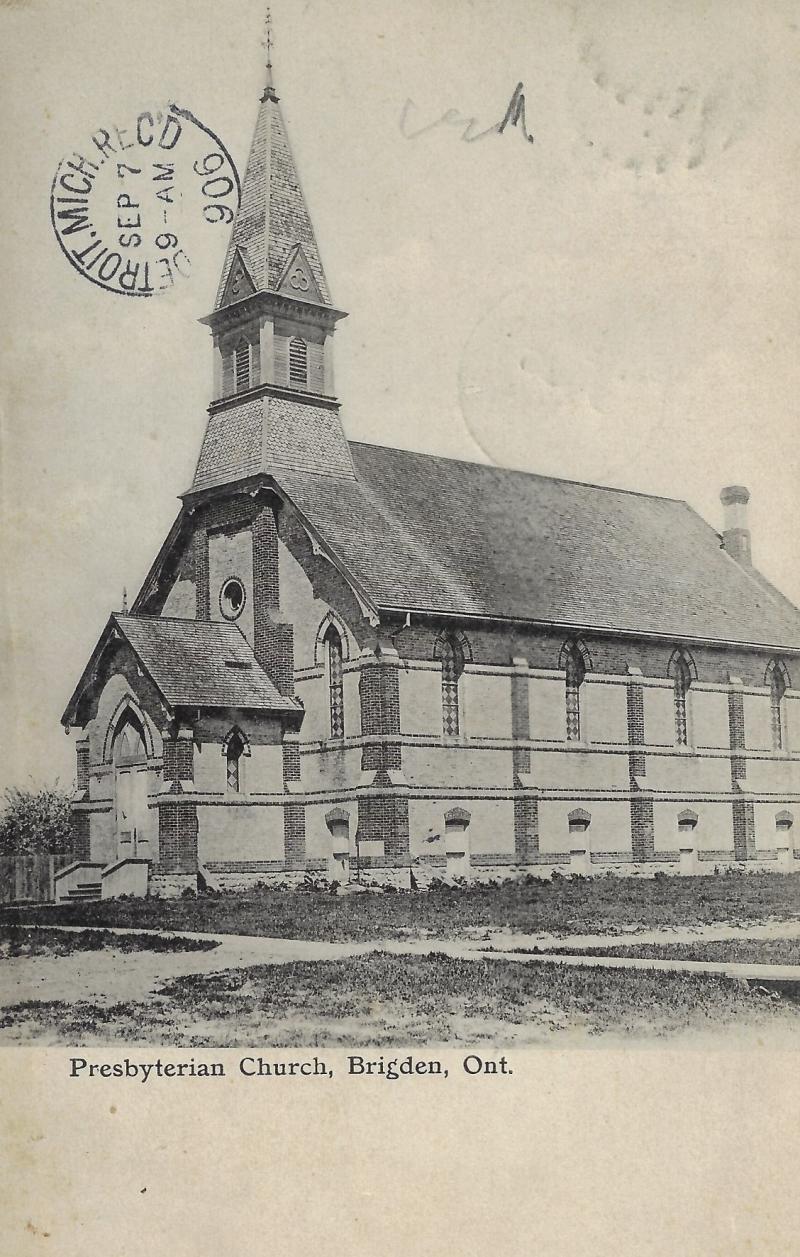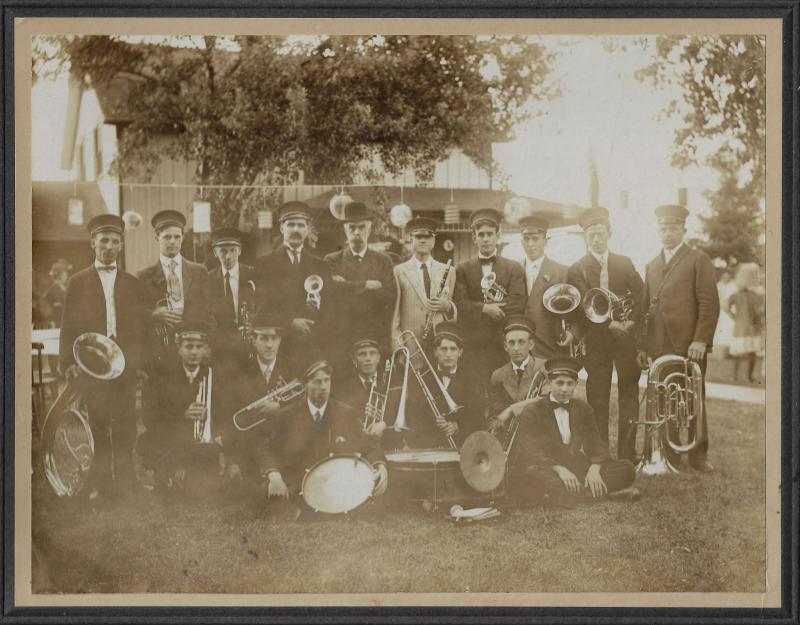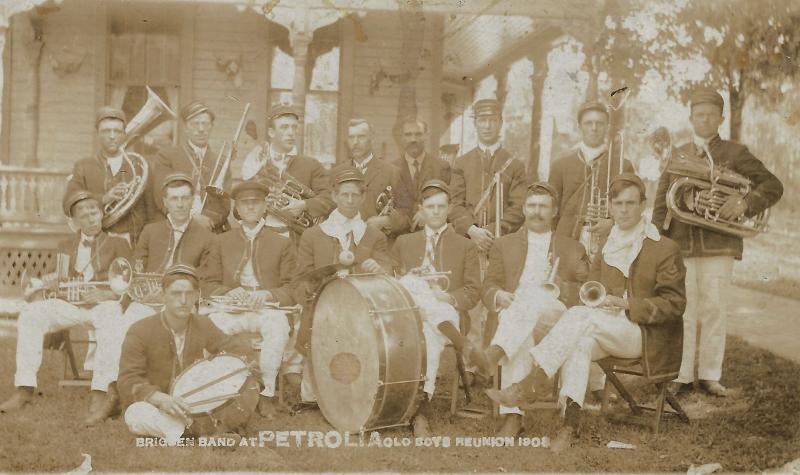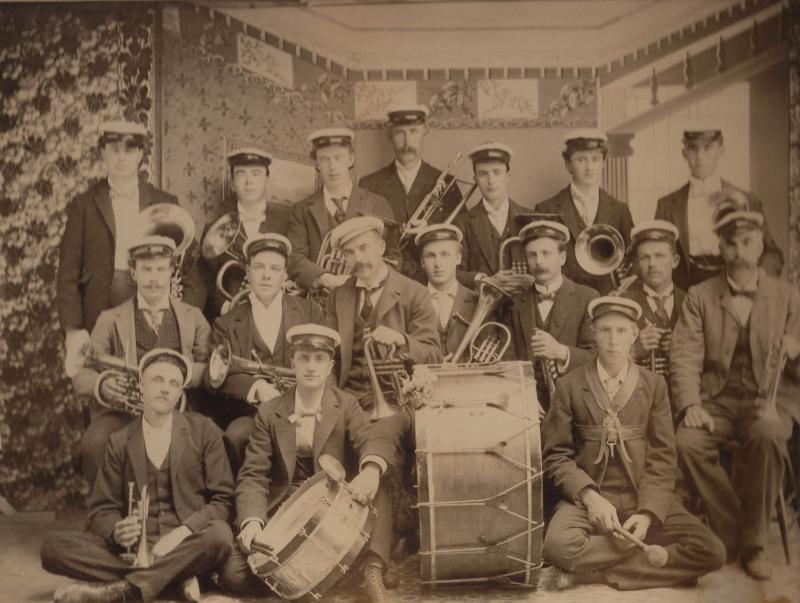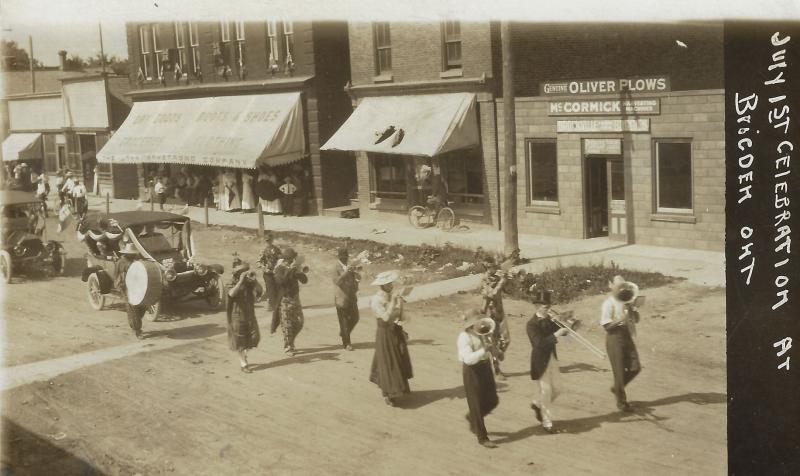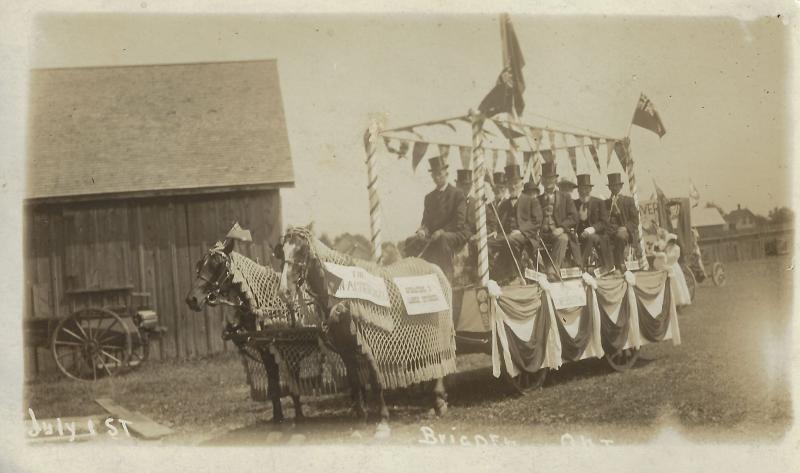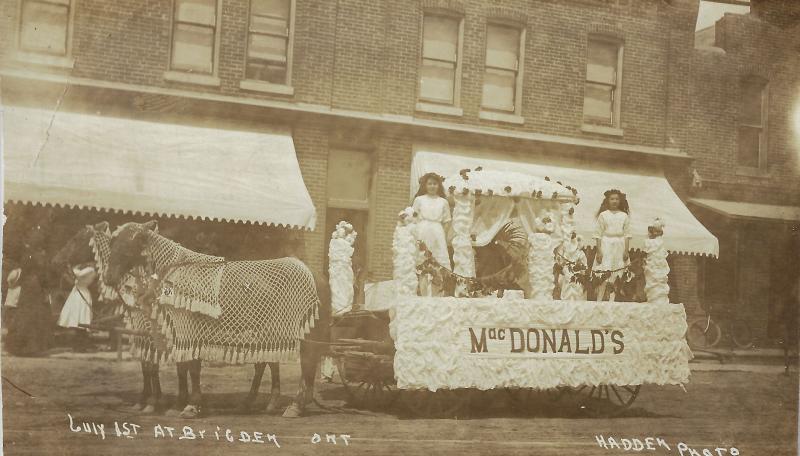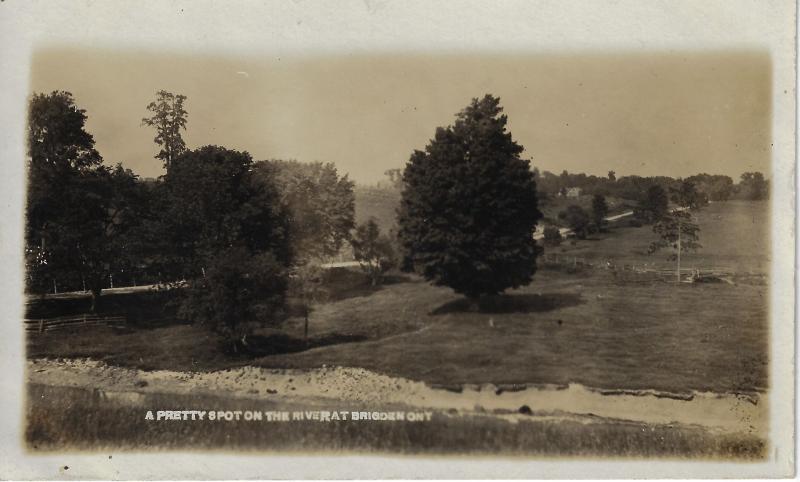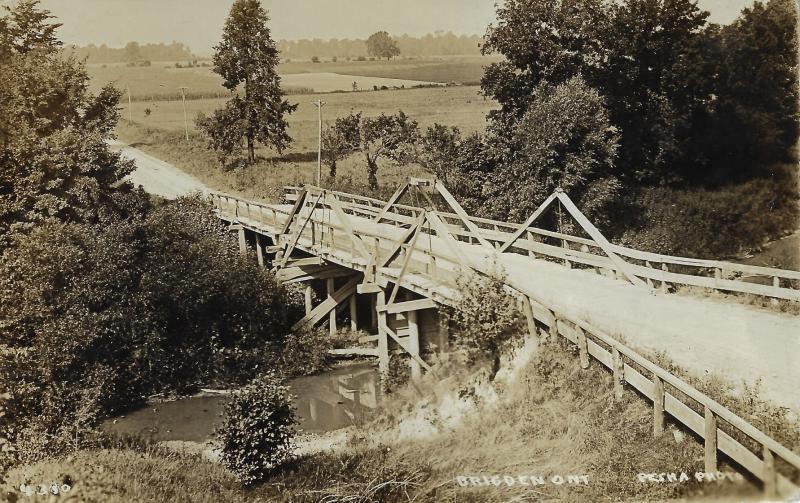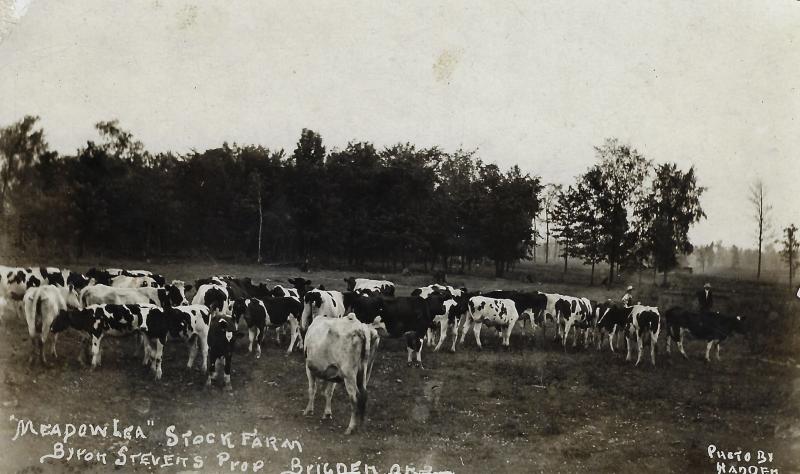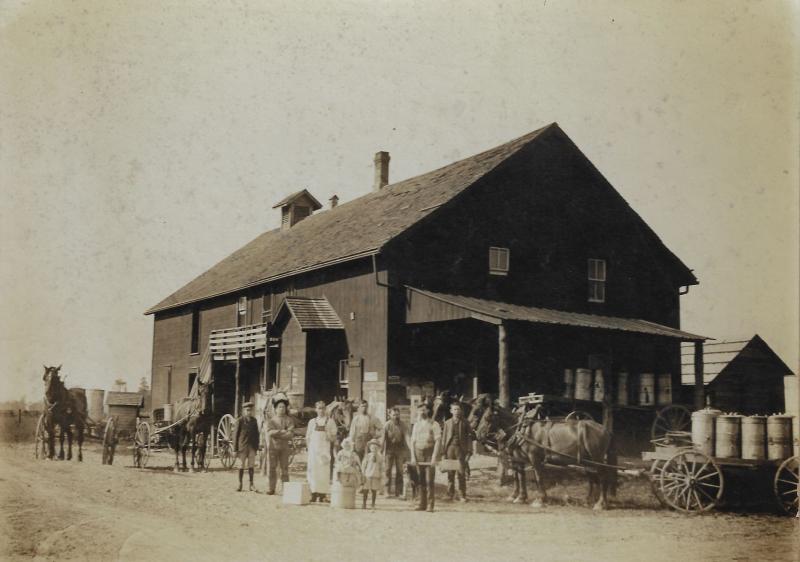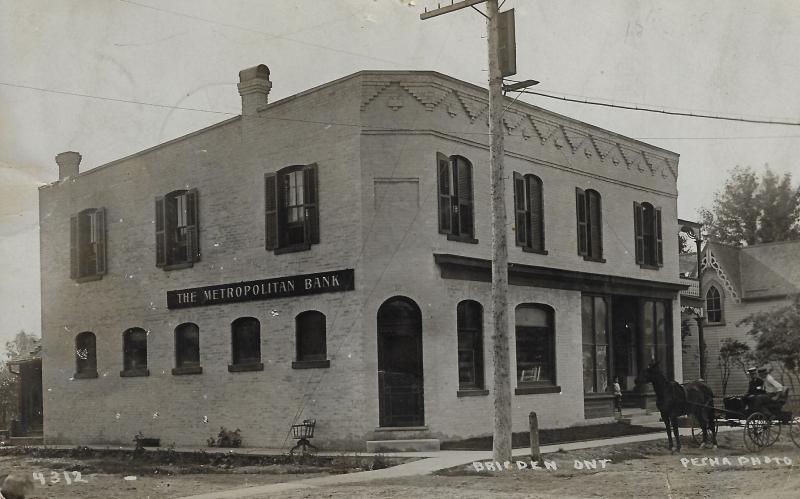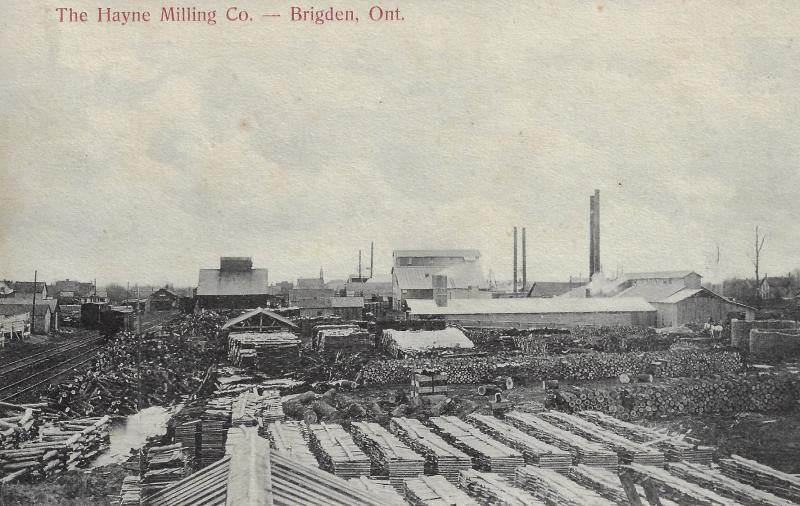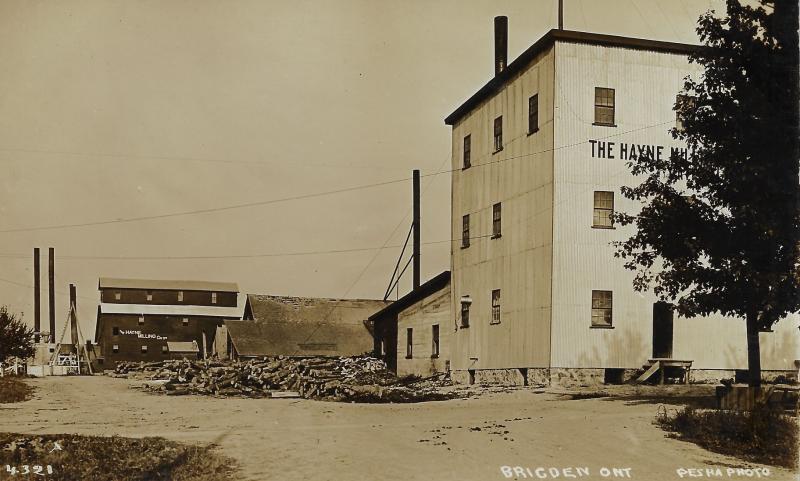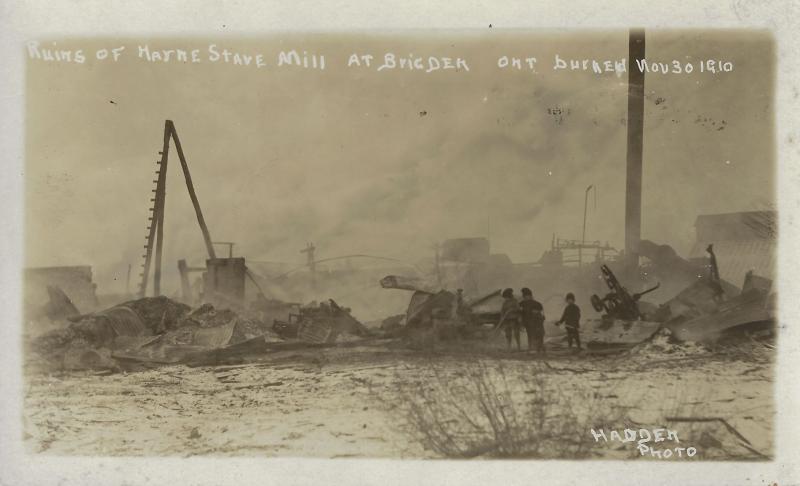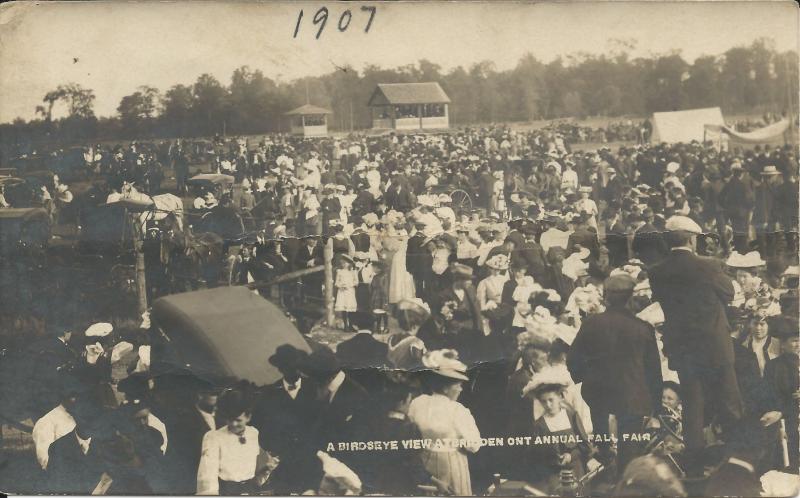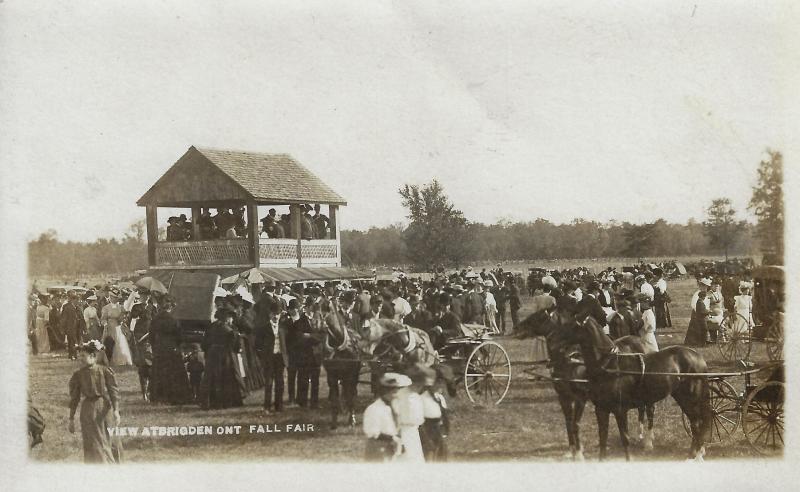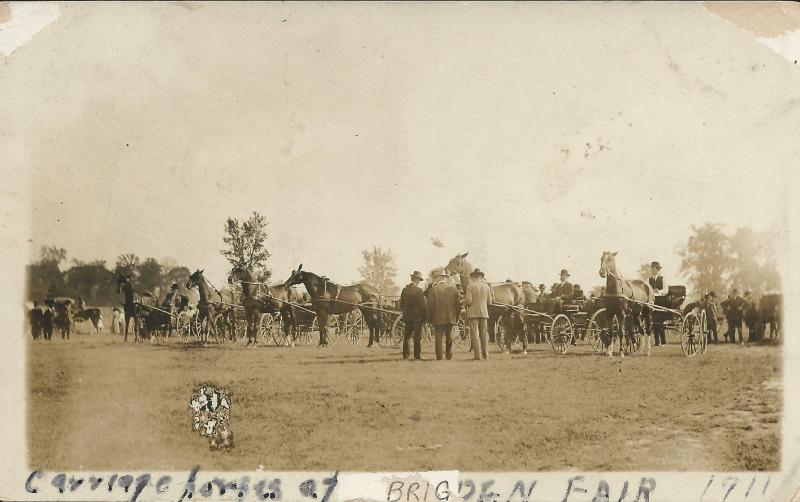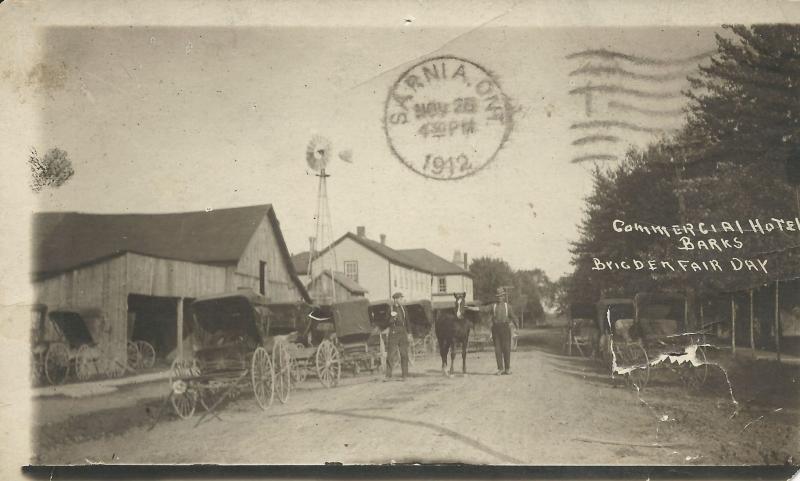
Like Courtright, Brigden, the largest inland community, also developed because of the arrival of the railroad, the Canada Southern (a division of the New York Central, later Michigan Central). In 1869, work began on clearing a right of way and by 1872 track was being laid. Believing that the railroad would allow the development of a lumbering industry in the area, and a village would be needed to support the industry, Nathaniel Boswell purchased land and laid it out as a village. He also built mills, a blacksmith shop and some houses. Brigden was named for William Brigden, a construction engineer on the railroad.
In 1877 Hiram Hales began a brick and tile yard and most brick construction in Brigden used these bricks. By 1879, there were 506 Brigden residents and the village included drug stores, general stores, a tailor, harness shops, a cobbler, banks, three churches (Baptist, Methodist and Presbyterian), a doctor, blacksmith and millers. The Hayne stave factory produced top quality barrels until a fire destroyed the plant in 1910. As Boswell had predicted, the lumbering trade was important in the early development of Brigden, but as the lumber supply dwindled, and a reliable water source became an issue, Brigden started to decline in population.
Brigden is well known for its Fall fair. The Moore Agricultural Society has held a fair since 1850, at first in various locations around the township and, since 1889, permanently in Brigden. So many Sarnia residents would visit Brigden Fair that school children in the city up to the mid-20th century were given a half-day holiday to attend.
For more information, please download the History of Brigden, 1934.
